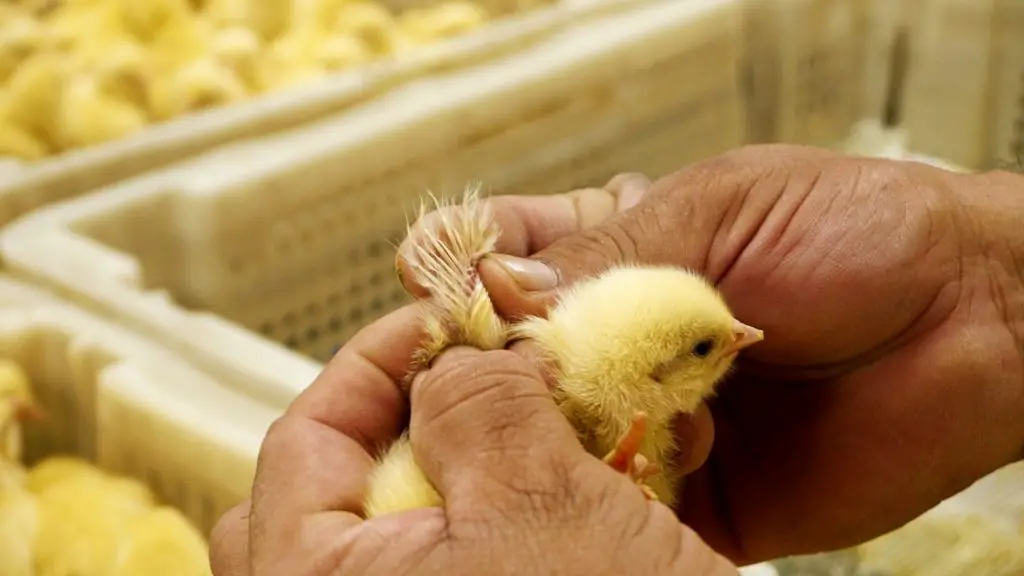Selling baby chicks is an excellent way for chicken breeders to make money. They tend to attract a higher profit if you sell them as young as possible. However, you need to make sure that you’re selling baby chicks wisely and in accordance with the law.
How to sell baby chicks? To sell baby chicks, you need to check your local poultry laws, test your chicks for diseases, set your price, advertise your chicks, and deliver your chicks to your end customer to earn a profit.
Read on to learn more about the necessary steps to follow when selling baby chicks. These standards are meant to protect you, the chicks, and the buyer.
A Step-by-Step Guide to Sell Baby Chicks
Check Local Poultry Laws

The most important thing you should do before selling baby chicks is to check the local laws in your area regarding the sale of baby chicks. Many states require permits for selling baby chicks and have specific rules sellers must follow to be considered compliant with the law.
For example, Massachusetts laws require that any poultry sold in the state meet minimum requirements for “pullorum clean” or “pullorum passed” poultry grades. This means that the chicks must pass a test for pullorum, a contagious disease. Often, chicks are also tested for typhoid and avian influenza.
Maryland also requires that your chicks meet state health requirements. Additionally, you must meet standards for sanitation and record-keeping to get a seller’s permit. If you sell chicks without a permit, you can face severe consequences.
Although most state laws are similar, you need to be sure to check the particulars; some states, like Kentucky, have unique laws. In Kentucky, you can only sell baby chicks under two months old if you sell them in a group of six or more.
Test Your Chicks for Diseases

Having your chicks tested for diseases before shipping poultry is required by law in most states, but it’s a good idea to do regardless. Even if you’re selling chicks locally in small quantities, you should take care to reduce the spread of disease. Avian diseases can be contagious both to other chickens and to humans.
The National Poultry Improvement Plan (NPIP) is a program run by the federal U.S. government in cooperation with states that conducts regular veterinary testing for poultry, including chickens, turkeys, and other birds bred to produce eggs and meat.
The NPIP covers the following diseases:
- Pullorum disease
- Avian influenza
- Typhoid
- Respiratory disease and sinusitis
- Synovitis
- Airsacculitis
- Salmonella
You can find partnering programs and associations in your state by reviewing this list of approved state testing agencies from the U.S. Department of Agriculture.
Set Your Price

To make a profit, you’ll need to balance the cost of raising chicks with the cost of selling them. The older they are when you sell them, the more money you’ll get for them, but this also means using resources to raise them.
Typically, you can sell day-old chicks for two to four dollars each, but the cost goes down once they reach even a week or two of age.
The price also varies depending on the breed. Purebred chickens will fetch the highest sum, especially Barred Rock, Rhode Island Red, or Americana chickens.
You may choose to auction off your chicks rather than using a set price, in which case you can allow the buyers to drive up the price based on demand. This is a great way to ensure that you’re getting the most for your chicks, as long as the buyers know the value of your breeds, especially if they’re rare.
Feel free to check other listings in your area to see what prices chicks are going for before setting up your advertisements. You want to remain competitive while covering the costs of raising chickens.
Advertise Your Chicks

You have several choices when it comes to advertising your chickens. The following are the most popular and effective ways:
- Print flyers. These should include a picture of the chicks you’re selling, details about their breeds and prices, and your contact information.
- Use Craigslist. Craigslist is a free way to sell products online. Simply find a local board on the website to post your listing and choose the category of product you’re selling. Offer as many details as you can to potential buyers in the product description, post high-quality photos, and enter an email address so that Craigslist can route your messages to you.
- Create a website. For a small fee, you can set up a high-quality e-commerce site to sell your baby chicks. Simply choose a provider (e.g., Shopify, Weebly, Squarespace, Wix) and then customize your site. Make sure that you include good photos and descriptions in your listings and that you keep the site up-to-date.
- Use Ebay. Ebay operates like an auction, allowing buyers to up the price as they compete for sales. Poultry buyers tend to respond well to auction sites, although Ebay might not be the best for rare breeds. See an example listing here.
- Use Rare Breed Auctions. Rare Breed Auctions is a website similar to Ebay in that it hosts auctions for products, but it’s centered on selling rare breeds of chickens. Here, you’re more likely to fetch an appropriate price for a rare chicken because the buyers are more knowledgeable.
- Advertise with a newspaper or magazine. Publications like Mother Earth News, Backyard Poultry Magazine, or your local newspaper host classified sections where you can post ads for your chickens. Through these ads, you can reach interested customers and give them direct access to you via email.
- Use social media. You can use groups on Facebook or other social media sites to find poultry buyers in your area. These groups will often host large-scale meetups for buyers and sellers to meet.
- Work with a company. If selling to individuals doesn’t meet your needs or you don’t want to be a salesperson, you might consider advertising to a large company like Purely Poultry. Companies will sometimes hire breeders, then sell the products for them.
Deliver the Chicks
Delivering your chicks can be simple or complicated, depending on whether you’re selling locally. The U.S. Postal Service will allow you to send live chicks by mail even over great distances, provided that you coordinate drop-off and pick-up times within a 72-hour window and you use an appropriate box.
Chick-shipping boxes are specially made with slanted sides to allow air space, with a straw pad inside for chicks to hold on to for stability. They need to be kept at an appropriate temperature, so extra cardboard and straw are important in the cold months, and in the summer, air holes are important for cooling.
The Postal Service ships millions of chicks in the United States every year, with a 1% mortality rate.
If you’re delivering locally, you can follow the same principles as used for mail shipments when setting up your shipping container. But make sure that you keep the chicks at an ambient temperature, avoiding leaving them in the car alone in any weather warmer than 50 °F (10 °C). Even ten minutes in a hot car can be fatal for young chickens.
You should make sure you don’t crowd your chicks, but don’t provide too much space in the carrier, either, as they can get jostled. The chicks should have just enough space to stand up and move around.
Related: What to Know About Chicken Farming? | Explained for Beginners!
Summary
Selling baby chicks may seem complicated and daunting at first, but once you have the appropriate permit, you can now focus on minding how to make sure your chicks are healthy and find a potential buyer. You can make living selling baby chicks while keeping a flock of your own, or you can enjoy the process as a hobby that brings in extra money.
